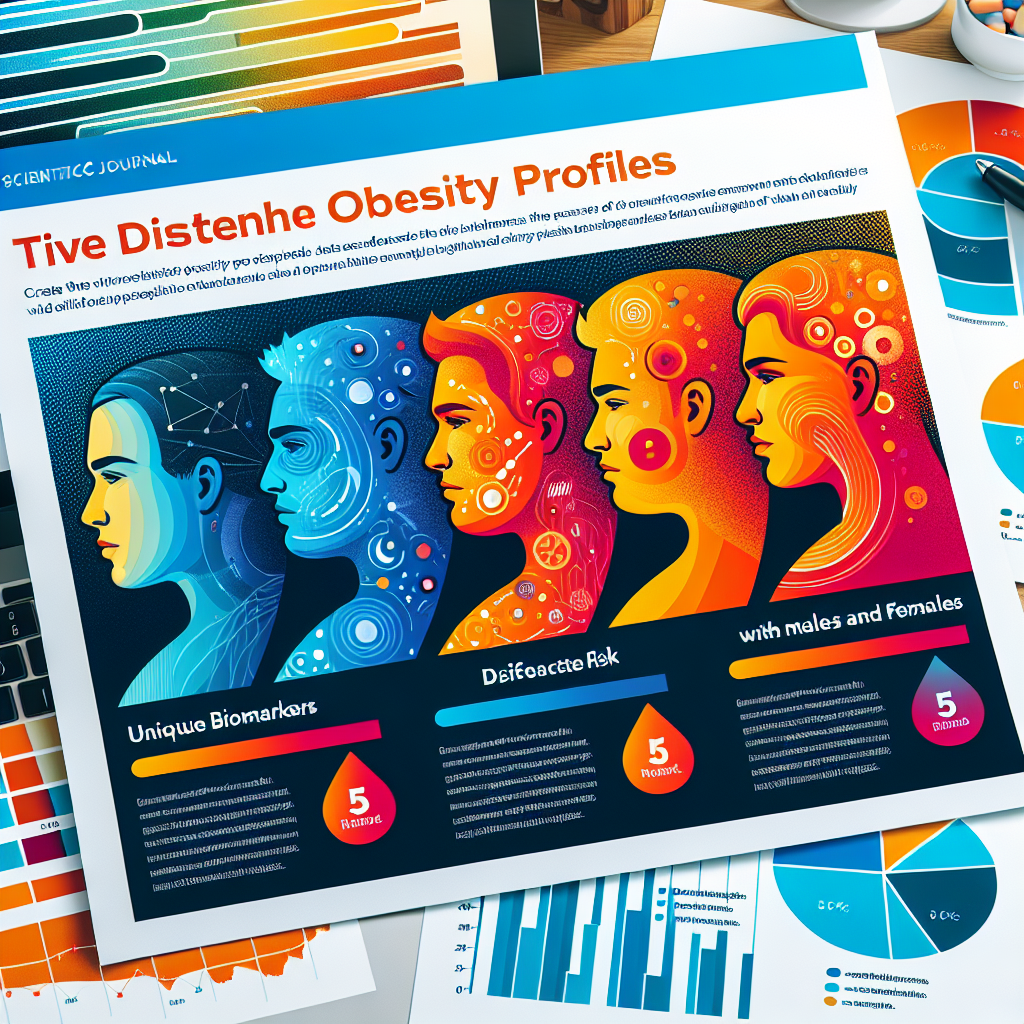In a groundbreaking study published in Nature Medicine, researchers have developed a novel approach to predict cardiometabolic risks in individuals with obesity. This innovative method goes beyond traditional Body Mass Index (BMI) measurements, offering a more precise and personalized assessment of health risks associated with obesity.
Subclassification of Obesity: A New Paradigm
The study introduces a revolutionary concept in obesity research by identifying five distinct profiles of obesity based on cardiometabolic biomarkers. These profiles are not directly correlated with BMI alone, challenging the conventional understanding of obesity-related health risks.
To establish these profiles, researchers employed advanced nonlinear clustering techniques on extensive datasets. The data sources included:
– UK Biobank (UKB)
– TwinsUK Biobank (TMS)
– Rotterdam Study (RS)
– Glasgow Healthy Study (GHS)
This comprehensive approach ensures a diverse and representative sample, enhancing the reliability of the findings.
Biomarkers and Profiles: Beyond BMI
The study’s innovative approach relies on a range of biomarkers to characterize obesity profiles. These include:
– Diastolic and systolic blood pressures
– Serum creatinine
– Alanine aminotransferase (ALT)
– C-reactive protein (CRP)
– Waist-to-hip ratio
– Age
– Smoking status
By considering these diverse factors, the research team could identify individuals at higher or lower risk of cardiometabolic diseases than what their BMI alone would suggest. This nuanced approach offers a more comprehensive understanding of obesity-related health risks.
The Importance of Personalized Risk Assessment
The use of multiple biomarkers allows for a more tailored risk assessment. For instance, two individuals with the same BMI might have vastly different cardiometabolic risk profiles based on their unique combination of biomarkers. This personalized approach can lead to more effective prevention strategies and targeted interventions.
Sex-Specific Differences in Cardiometabolic Risk
One of the study’s most significant findings is the identification of substantial sex-specific differences in cardiometabolic risk profiles. These differences highlight the need for gender-specific approaches in obesity research and treatment.
Key observations include:
– Generally higher CRP concentrations in women
– Stronger relationships between CRP and adipose mass/adipose distribution in women compared to men
These findings suggest that predictive models for cardiometabolic risks should be stratified by sex to improve accuracy. This sex-specific approach represents a significant advancement in precision medicine for obesity-related health issues.
Enhancing Predictive Accuracy
The inclusion of discordant profiles in predictive models significantly improves the accuracy of diabetes progression prediction, particularly in women. This improvement aligns with previous research showing higher diabetes prediction accuracy in women when models incorporate anthropometric variables.
Implications for Clinical Practice
The enhanced predictive accuracy offered by this new approach has significant implications for clinical practice:
– Early identification of high-risk individuals
– More targeted preventive measures
– Personalized treatment plans
– Improved patient outcomes
By providing a more precise risk assessment, healthcare providers can intervene earlier and more effectively, potentially reducing the incidence of obesity-related cardiometabolic diseases.
Methodology and Validation: Ensuring Robust Results
The study employs sophisticated methodological approaches to ensure the reliability and validity of its findings:
– Nonlinear clustering techniques to describe multivariate data distribution without linear assumptions
– Assessment of partition quality using relative entropy (Kullback-Leibler divergence) and connectivity within profiles
– Naming of clusters based on average residuals of all biomarkers
– Inclusion of only clusters represented in all three cohorts in the final model
This rigorous methodology enhances the study’s credibility and the applicability of its findings across diverse populations.
Ethical Considerations and Inclusive Research
The researchers demonstrated a strong commitment to ethical and inclusive research practices:
– Measures taken to prevent stigmatization, incrimination, or discrimination of participants
– Consideration of personal risk to study participants
– Inclusion of local and regional research in citations
These ethical considerations ensure that the study’s findings can be applied responsibly in clinical settings and future research initiatives.
Implications for Future Research and Clinical Practice
This groundbreaking study opens up new avenues for obesity research and treatment:
– Development of more sophisticated risk assessment tools
– Personalized intervention strategies based on individual risk profiles
– Potential for new therapeutic targets based on biomarker profiles
– Enhanced understanding of the complex relationship between obesity and cardiometabolic diseases
As research in this field progresses, we can expect to see more tailored approaches to obesity management and prevention of related health complications.
Frequently Asked Questions
Q: How does this study differ from traditional obesity research?
A: This study goes beyond BMI, using multiple biomarkers to create distinct obesity profiles that offer a more precise prediction of cardiometabolic risks.
Q: Why are sex-specific differences important in obesity research?
A: Sex-specific differences in cardiometabolic risk profiles suggest that men and women may require different approaches for risk assessment and treatment of obesity-related health issues.
Q: How can these findings improve healthcare for individuals with obesity?
A: By providing more accurate risk predictions, healthcare providers can offer more personalized and effective prevention and treatment strategies for obesity-related cardiometabolic diseases.
Q: What are the next steps in this line of research?
A: Future research may focus on developing clinical tools based on these findings, further refining the obesity profiles, and investigating potential new treatments tailored to specific risk profiles.
In conclusion, this innovative study represents a significant leap forward in our understanding of obesity and its associated health risks. By moving beyond BMI and incorporating a range of biomarkers, researchers have developed a more nuanced and accurate method for predicting cardiometabolic risks in individuals with obesity. This personalized approach, which takes into account sex-specific differences and individual biomarker profiles, has the potential to revolutionize obesity treatment and prevention strategies. As we continue to unravel the complexities of obesity and its impact on health, this research paves the way for more effective, tailored interventions that could significantly improve outcomes for millions of people worldwide.
Source: Nature Medicine – Subclassification of obesity for precision prediction of cardiometabolic diseases
